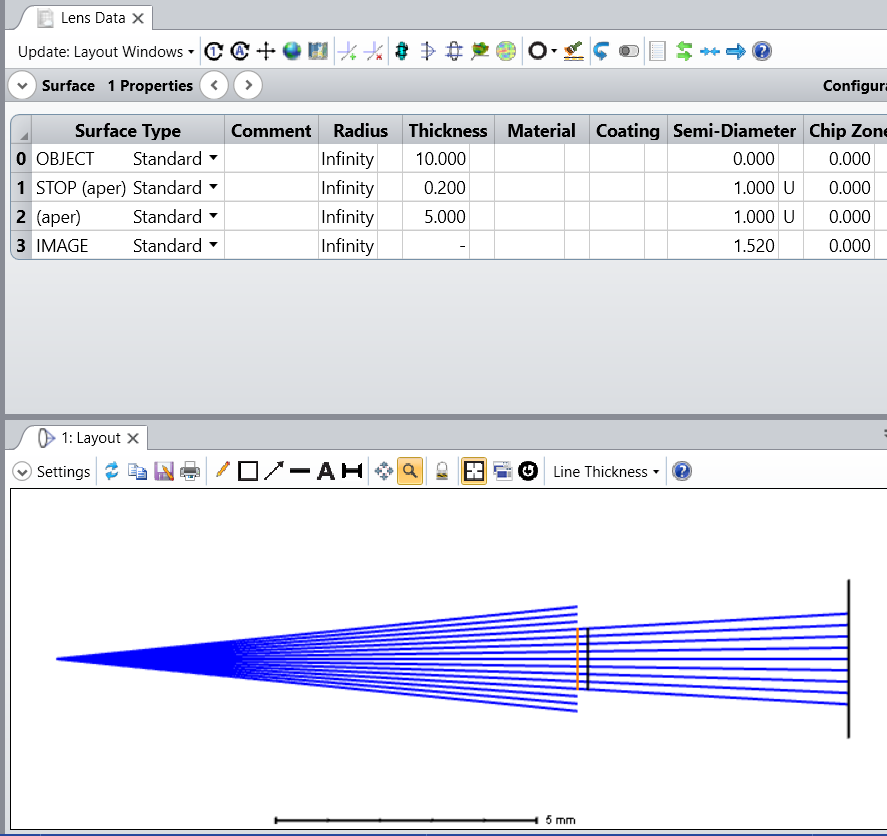Hello,
I want to model a physical stop (meaning, an additional stop which is not one of the lens surfaces), and this stop should have thickness, as physical stops do. How do I model such an element, which has thickness and blocks the light? Clearly, specifying the thickness of the stop surface in the regular manner would just mean the distance to the next lens surface, which is not my intention. Also, in the case of a stop with thickness, which of its two surfaces is defined as the stop surface, or maybe some intermediate plane between them?
I’d be happy to hear any insights you have about dealing with the stop physical thickness.
Thank you.




